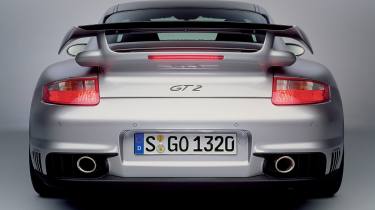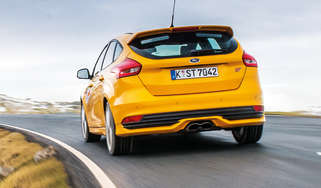Brussels rethink on CO2 emissions
EU wakes up to the fact that some car makers can’t meet 2012 target
A few years ago, the great and the good and the would-be green of California had a nasty shock. Confident that if it piled on enough pressure it could force what it regarded as recalcitrant car makers into creating a technology revolution, the California Air Resources Board mandated that by 2008 ten per cent of cars on California’s roads must have zero emissions. And most of the rest, trumpeted CARB, would have to be ‘ULEVs’ – ultra-low emission vehicles.
It hasn’t worked out like that. CARB’s blithe assumption that car makers could do it if only they could be bludgeoned into spending enough billions on R&D proved a false one. The car makers couldn’t do it – not because they avoided spending enough money, but because the technology challenge was too much. Example: back then, Mercedes-Benz was predicting that it would have fuel-cell cars on sale to Joe Public by 2004. Now, just like purely battery-powered cars over the past century, competitively-priced fuel-cell cars seem eternally ‘just around the corner’.
As Frankfurt was preparing to open the doors of its massive biennial motor show in early September, bureaucrats at the EU in Brussels were, just like CARB, finding themselves having to face up to some uncomfortable home truths – but this time over global-warming CO2.
Back in February, with their usual disdain for researching exhaustively before legislating, the men in Brussels announced that by 2012 each car maker would be required to cut the average CO2 emissions of the cars they produced to 120 grams per kilometre, compared with an (unmandated) average of about 160g/km now. Easy-peasy, they suggested – all the car makers would have to do is make more hydrids, come up with some other nifty new technologies and make sure they ran on environmentally friendly alternatives to petrol, such as biofuels.
Er, so Brussels didn’t mind if it wound up stuffing half the German car industry, along with Land Rover, Maserati and an assortment of other exclusively luxury car makers then? This was the gentle inquiry from Fiat boss Sergio Marchionne in his capacity as head of the European Automobile Manufacturers’ Association. As a car chief, Marchionne has fewer worries about meeting such a target than most – Fiat, after all, specialises in small cars – but the average CO2 emissions for the Porsche range, for example, is butting up against 300g/km and even BMW’s 3-series averages out to close to 200g/km. As for Lamborghini – whoops! – its average is over 400…
Crude averages, it finally dawned on the EU men, simply would not work – not unless they were prepared to put 100,000 prestige car employees on the dole in Germany alone.
Thus the second, third and fourth thoughts, and the wearisome horse-trading over numbers, has begun. Bizarrely, under some of the revisions now being proposed, the makers of executive and luxury cars could wind up being better off than the Fiats, Peugeots and other small-car makers of the world. Wilting before political pressure from Berlin, EU envirocrats are beginning to accept that there should be a scale of higher CO2 allowances for larger prestige and luxury cars.
The details, however, remain hazy, and it will be the end of this year at least before a final framework is drawn up – leaving a scant four years to create an industry technological revolution.
But whatever the detail, and presuming technical hurdles can be overcome, it is going to cost – not just the car makers, but you and me as consumers as the car makers pass on some (at least) of the costs.
According to a study by Credit Suisse and automotive consultancy AT Kearney, the bill for meeting an industry-wide average of 120g/km would total $15.3bn between next year and 2012, meaning an extra cost of nearly $2000 per car for BMW, Mercedes et al and up to $1500 for more humdrum cars.
Better strike those nice fat alloys from the options list…



